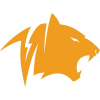Tigera: Prevent a potential DDoS Attack with Application-Layer Security Controls
Layer 7 refers to the top layer in the 7-layer OSI Model of the Internet. It is also known as the “application layer.” It’s the top layer of the data processing that occurs just below the surface or behind the scenes of the software applications that users interact with. The HTTP requests and responses used to load webpages, for example, are layer 7 events.
DDoS attacks that take place at this level are known as layer 7 attacks or application layer attacks. Given that attacks on apps are the leading cause of breaches, you need to protect the HTTP traffic that provides a gateway to valuable app data. In this webinar, you will learn how protect web applications from a variety of application layer attacks such as cross-site scripting (XSS), SQL injection, and cookie poisoning, among others.
Topics Include:
- Enabling L7 logging to capture application interactions from HTTP header data in requests with greater specificity than flow logs
- Using Dynamic Service Graph to aggregate L7 log data and show what is actually sent in communications between your pods
- Creating WAF rules to selectively run service traffic within your cluster, and protect intra-cluster traffic from common HTTP-layer attacks
- Setting globalAlerts templates to notify your security teams when there is a blocked HTTP requests in your log data
- To increase protection, you can configure security policies to enforce zero-trust controls for selected pods on the host.

